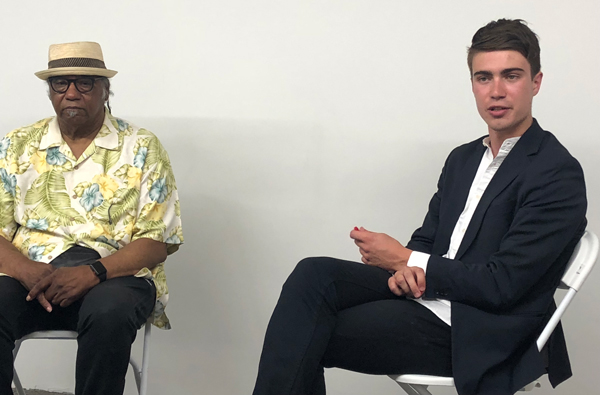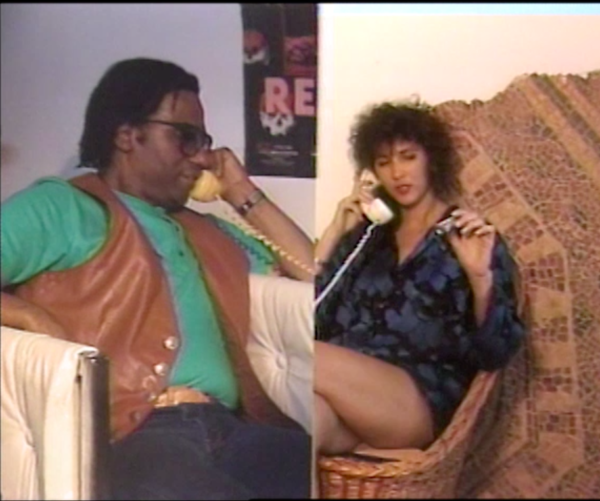Halfway through the selection of videos by LA artist Ulysses Jenkins, I was sweaty and sticking to my seat in the crowded upstairs cinema room of ltd los angeles gallery. Still, it was little of a deterrent to my enjoyment. The gallery provided beverages along with popcorn and Red Vines, a charming nod to movie-going. The screening began with an opening statement by guest curator, Lucas Matheson, where he explained that the videos were selected to correspond with the current group exhibition downstairs, “Everyday Muse,” curated by John Edmonds and gallery dealer Shirley Morales. In the audience were 20 or so visitors, among them the performance/video artist himself Jenkins, Lavina Wetterberg, a performance artist and actress in Jenkins’ Stinji (1988), performance artist Snežana Sarawati Petrovic and Todd Gray among others.

Ulysses Jenkins and Lucas Matheson
The selected videos spanned from 1981 to 2018, and portrayed the role of black men in America. The first video screened was Inconsequential Doggereal (1981), a 15-minute experimental video collage that Jenkins described as a “waltz.” The video was created as an analog editing experiment while Jenkins was teaching at UCSD and displayed a fascination with the sounds and visuals created when running tape backwards and forwards during the editing process for syncing sound and visual elements in analog videos. The video was clearly an experiment in visual language and symbolism, and by using quick edits (a stylistic choice not yet popularized at that time), Jenkins told abstract stories of violence, male insensitivity and personal sensitivity, capitalism, inter-personal relationships and the political landscape of the 1980s.

The audience is listening
The following three videos, Vunerable (2000), Bequest (2002), and Anachronism (2018) appear as part expressive art video/part music video, with distinct and separate narratives though similar aesthetic choices despite their wide span in their creation dates. While the aesthetic is definitely hippie New Wave, and appears somewhat dated, the consistency throughout the videos does give the indication that Jenkins is making intended decisions on how his videos look.

The last, and perhaps strongest video, Stinji (1988), was created by Jenkins during the height of the AIDS epidemic as a PSA aimed towards the African American community, since many PSAs were leaving black people out of the conversation. Jenkins plays an irresponsible and aloof performance artist/musician who is faced with frustration from his sexual partner when she realizes that the responsibility of providing a condom has been left to fall on her shoulders alone. The video was viewed for the first time, and is still strikingly relevant, and shows that when Jenkins focuses on a story with plot devices, he can shine by creating relatable and unique storylines.


